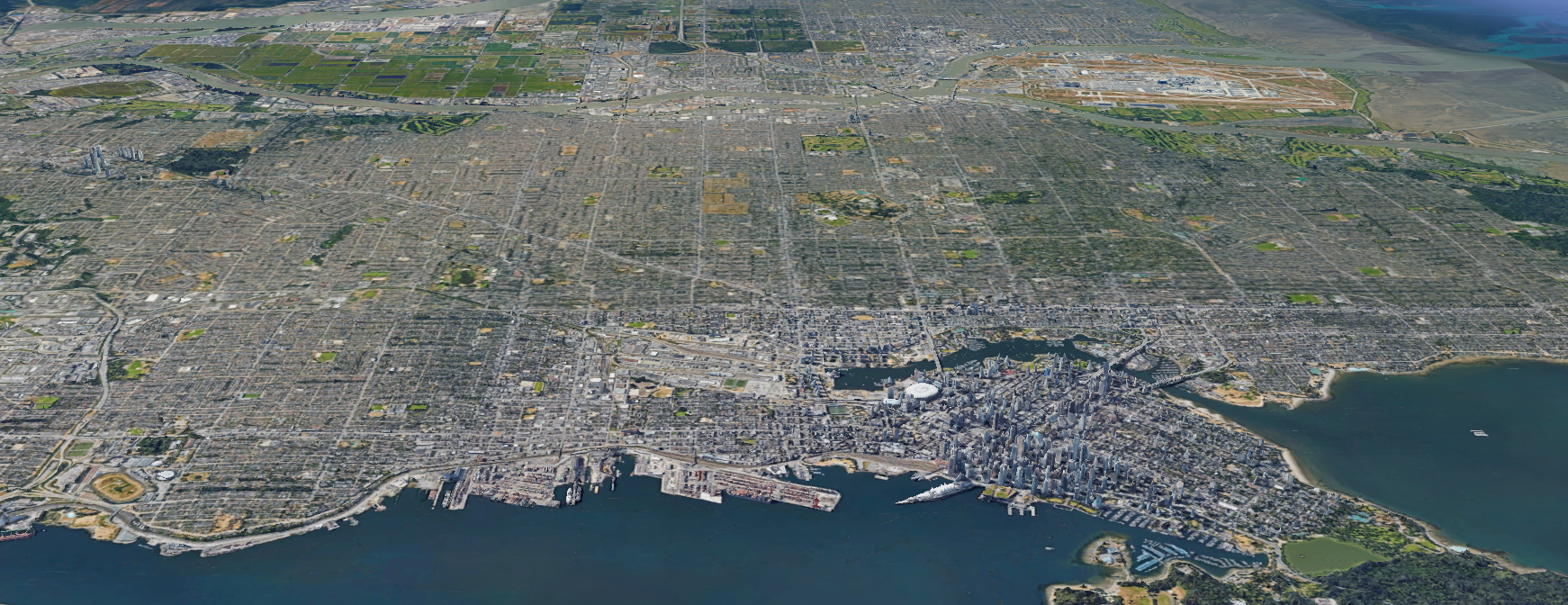1
2
3
4
1: Burnaby District
The business district in Burnaby is a smaller city like area with a few skyscrapers, office buildings, and other businesses. Unlike Vancouver this area is covered in parking lots and scattered planning. From this, the space become unwelcoming and unwalkable for people
2: Vancouver Shipping Yard
In the middle of Vancouver there is a massive cargo train yard. From an aerial view, this yard looks like a massive scar on the city. This whole section is practically unusable to humans and animals. While some businesses have moved into the area it is still covered in concrete and hostile space.
3: Oakridge Center Mall
The Oakridge center mall is a new construction site that is still in progress. In 2020 there was building was temporally halted, however construction has begun again. It is estimated to be finished around 2027. Currently the sight is a barren land that is not so pleasing for the public. Additionally, there is a massive parking lot across the street intended to be used for the mall. Surprisingly, these types of large parking lots are pretty uncommon for Vancouver. Even in the most dense part of the city it is rare to find a parking lot of this size, which begs to question why the mall needs such a parking lot. Hopefully as construction continues it will be more inviting and better for the local community and public.
4: Vancouver Airport
The Vancouver Airport is by far the largest area that is completely uninhabitable by humans and made of mostly concrete. However, this is always necessary for airports and they need a huge amount of space. Instead of making many smaller airports around the area, Vancouver selected one island to hold a much larger airport for the city. By placing it on a separate island, it is secluded enough that it is not a disturbance to the public and still close enough for everyone to get to.
A3: Fluctuations
Landfills
1: 5400 72nd street, Delta, BC Canada
There is currently one main landfill for the city of Vancouver. It is located south of Richmond is a decent drive away from the city. The surrounding area is pretty baren. There are a few farms, but it is mostly isolated from any homes or urban space.
Aside from the main landfill, Vancouver has a plethora of recycling area scattered throughout the city. Most of these spaces are located on the shoreline around the city. They likely were renovated buildings from the industrial era, but definitely help to reduce the amount of waste going into the landfill.
Industrial Lands & Undeveloped Spaces
Approximately 136 square km are used for industrial purposes in Vancouver. Compared to the 554 square km for agriculture and 1,347 square km for conservation this number is fairly small. Overall, the industrial land use is mostly along the inner shoreline of the city. This is likely due to the landscape history and old factories needed to be near water. However, today many of the spaces have been renovated and are much safer for people and the environment.
Vancouver Waterways
Nearly 90 percent of Vancouver’s waterways have been buried. During the industrial revolution that was a common thing as many of the waterways were polluted and smelled bad. However, as this era comes to an end it brings the question of if the water ways should be reopened.







